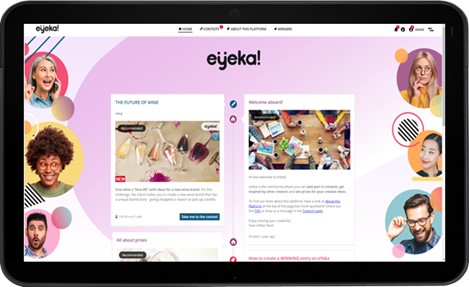Blog
Three tips for successful creative crowdsourcing
Boost your innovation with better and faster ideas by combining the right people with the right approach and the right follow-up.


Charlene Van Niekerk
06 September 2023
4 min read
In an interview with Forbes innovation author and speaker Warren Berger said: “Now, more than ever, creativity is the competitive tool that’s going to make a difference. Whether you’re an entrepreneur, a large company, or a solo creative person, it’s what makes you stand out.”
Creativity is in high demand but unlocking it within your organisation comes with many challenges. First, there is scarcity, as creative people are a rare breed, and second, there is the problem of homogeneity. The latter means that people that work (or live) in the same environment are likely to adopt a similar frame of reference, similar values and grow shared biases. A solution to this ‘creativity scarcity’ and homogeneity issue can be found in a practice called ‘creative crowdsourcing’. By collaborating with external stakeholders – such as creative consumers – brands can access a continuous supply of fresh ideas and inspiration. Our proprietary creative crowdsourcing network eÿeka has been supporting brands with their creative challenges since 2001. Based on our 20+ years of experience, we have identified three success factors for creative crowdsourcing.
1. The right people
Involving the right people for your creative challenges is the first critical success factor. It’s about involving those individuals that can think out of the box and have a hungry mind for creative solutions. But it is also a matter of ‘diversity’ and thus involving a diverse set of people to get to ideas that spark. This is why our eÿeka network includes people with different skill sets – from copywriters, to illustrators, packaging designers and many more. But also, different levels of expertise – from students that want to experiment and develop their talent, to professionals taking their passion further.

Creative crowdsourcing is all about embracing the intelligent naivety from a diverse group of outsiders to enrich creative processes. As creative tasks can only benefit from inserting fresh cultural and international perspectives, we also cater for cultural diversity by inviting creatives from different regions across the globe to participate in any challenge. Good ideas can literally come from anywhere, irrespective of a creative’s experience with the specific market, brand, category, or even product. A limited experience with the topic might even free them from certain modus operandi, allowing them to not only think outside the box, but to completely lose the box. In fact, based on our experiences with eÿeka, we know that 90% of global contest winners – or entries identified as most relevant by our clients – are located outside the target market.
2. The right approach
Our second factor is all about using the right approach. Typically, creative crowdsourcing is organised as a contest, with brands challenging creative consumers to come up with original solutions to a (business) problem. In the eÿeka network, each contest starts with a straightforward brief that is ideally built on a strong consumer insight. For instance: “. It’s all about triggering the creatives with challenging, fun, creative exercises that help them to open their minds and let their creative ideas flow freely. Like ‘AnnaNThang’, a top graphic designer, says: “Don’t even get me started on how much eÿeka has made my brain explode in the creative category. I am continuously challenged. I’m always so excited to see which new contest are posted.”
As this quote shows, the joy of creating and learning new skills motivates eÿeka members to participate in creative contests. To fuel their learning process, we can organise a ‘Feedback circle’. If allowed by the challenge’s confidentiality level, we invite participants that submitted an idea to browse through the other ideas and exchange feedback. This peer-based feedback allows to learn from each other and grow in their creative work. Yet, next to such intrinsic motivation, extrinsic motivators should not be overlooked. In creative crowdsourcing contests, the best ideas usually get rewarded with a nice prize. This often is a monetary compensation – as we learn from research by the University of London – that can be effective in stimulating greater participation in crowdsourcing initiatives, as well as in motivating participants to create more useful ideas. Similarly, the winning creators in our eÿeka network share the agreed prize pool after the contest winners are identified.
3. The right follow-up
But the creative crowdsourcing journey does not end with the selection of winning ideas; on the contrary, it is a starting point. So, our final success factor is all about the right follow-up. To come to integrated product, brand or experience concepts, we need to merge the power of the creator network with internal intelligence. Typically, this is done via an ideation workshop, where stakeholder teams also ideate and build further on the eÿeka ideas by analysing, clustering, and evaluating them. Together, they then transform them into ‘winning’ business concepts, ready for market launch. It’s about internalising the outside perspective and making sure the final concepts are ready to be tested on desirability, feasibility, and viability. Collaborating with everyday and engaged consumers helps in this final step by adding relevance to the initial ideas, preparing a successful launch.

The key to running impactful creative crowdsourcing initiatives lies in combining the right people with the right approach and the right follow-up. Are you ready to apply our success formula?
Let’s connect